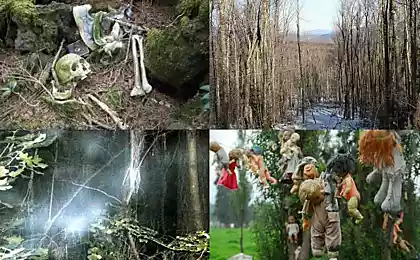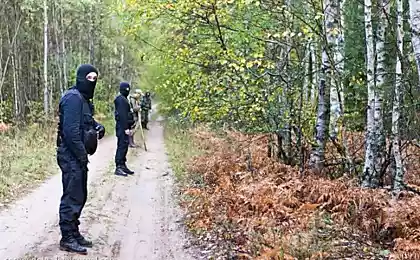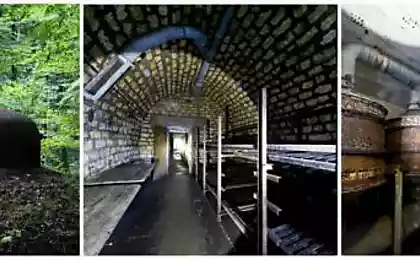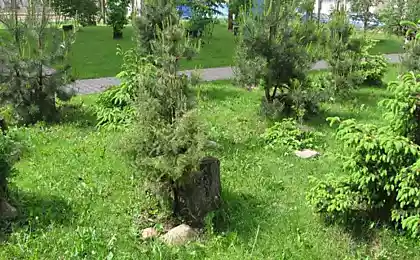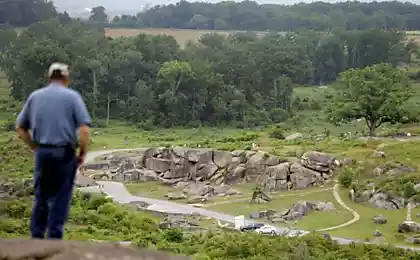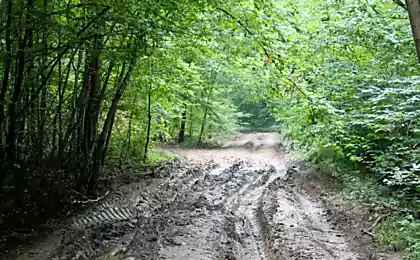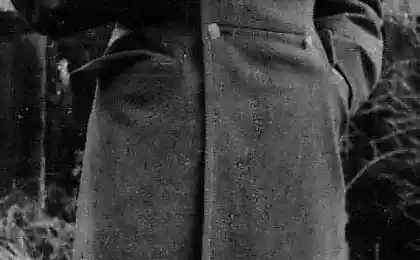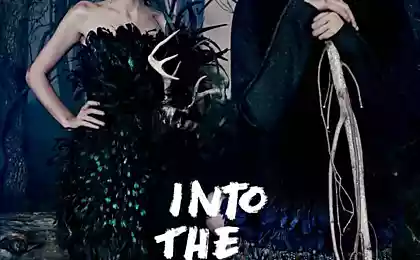263
Learn how to survive in the winter forest without a gun
If we talk about food in the winter forest, even in the taiga, even in the middle forest, then you will not survive there alone without equipment. And all these ideas of digging up cloudberries from under the snow, worm bugs and harvesting berries are nonsense.
We will not dig anything under a half-meter layer of snow! It's not energy efficient! We're going to spend more calories looking and digging up than we get with the food we find.
Food is also a kind of business: investing, we must make a profit or at least go to zero. Otherwise, the business is unprofitable. The exception is mushrooms growing on trees (see photo).
1. Winter care. In mild winter, it grows until March.
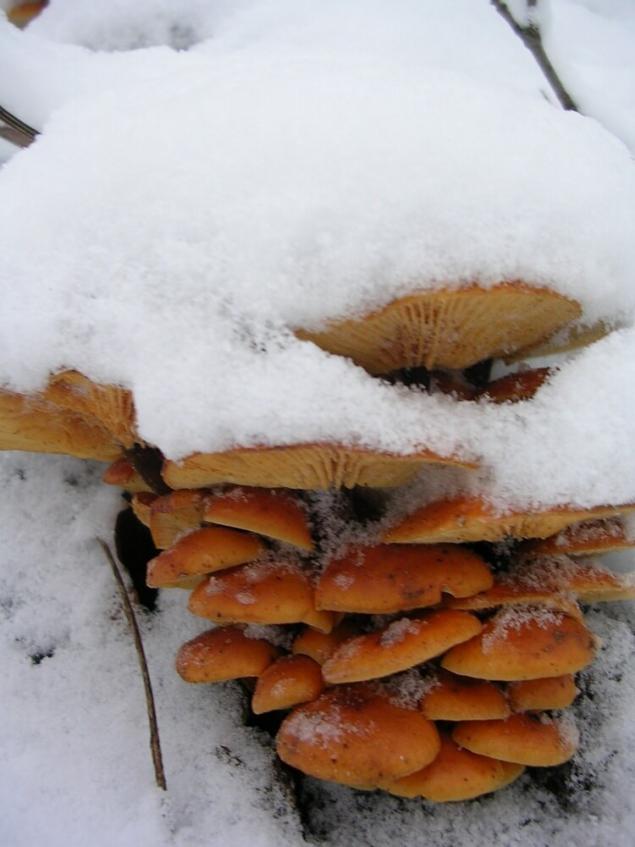
2.Ovens. They grow on trees all winter. If they are frozen to a hard stone state, they can be sawed off with a hacksaw or cut with a knife.
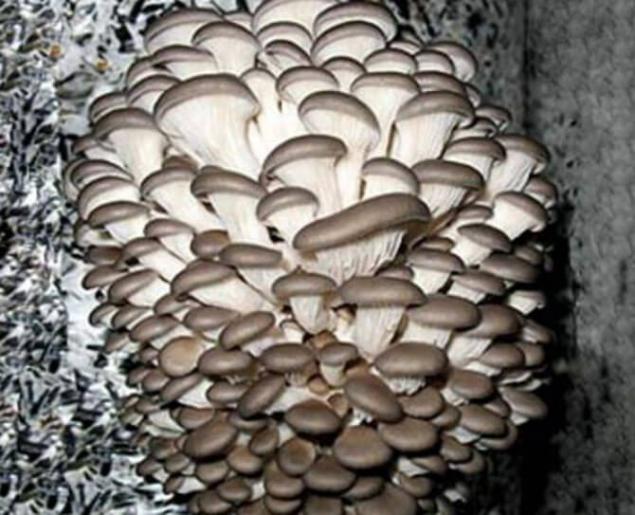
3. Orange Tremella (Scientifically Tremella Mesenterica). It can be found on rotted hazel and other dry hardwood trees. It is quite edible and sufficiently nutritious product. In the heat, the mushroom is practically not stored, we use quickly. Fry, boil, add to the soup or roast.

But a full diet can only create hunting and fishing. Fishing is less costly in effort than hunting, although it will require no less ingenuity. Therefore, if you find yourself in the woods in winter without a firearm, it is best to immediately head towards a lake or river.
Fishing.
Fishing is preferable if you have something to do with ice. For this purpose, an axe and an infantry spatula are suitable. As a last resort, a knife will do. Only hollowing out the hole with a knife will take much longer. And another advice: tie a noose on the knife so that it does not slip out of your hand. Needless to say, the ice must be strong enough to support your weight, otherwise swimming in sub-zero temperatures is guaranteed.
First, decide how you will fish. I would recommend ice fishing for the cross. This method of fishing is described in detail in special literature. The change is made as follows. The cargo clings to a fishing line or a sufficiently long rope. If there is no suitable loader, fill the can with sand. No can - wrap a stone in a piece of fabric. Well, that's not the hard part. It's much harder with fishing hooks.
Hooks can be made from pieces of wire, pins, sharp bones or even sharpened knots. The hooks are tied tightly along the line. Now it's the bait. Suit dry berries collected along the river bank, or scraps, and even feathers of birds. The line is dropped into the hole so that the load falls to the bottom. The upper end is tied to the middle of a small stick. The stick should be such that it cannot slip into the hole. Across this stick, in the center, at 90 degrees, the second is tied, on the upper end of which you can attach a piece of red cloth or just a lump. The stick to which the fishing line is tied lies slightly away from the hole. The fish pulls the line and drags the stick to the wormwood. But, since its length is greater than the size of the hole, it does not fall into the water, but stands across. In this case, the flag stick will stand upright and indicate to you that it is time to pull out the catch.
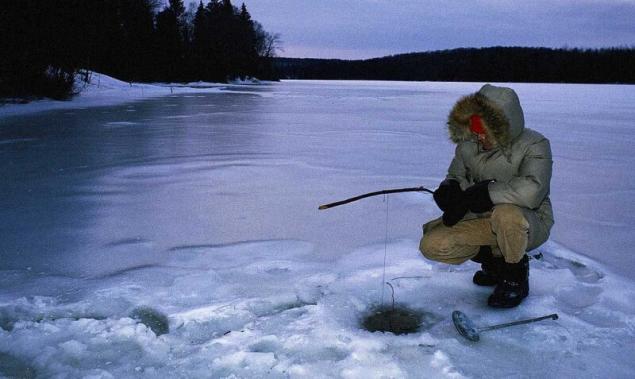
The switch is most effective in the “poacher” version, with the number of hooks more than 10. When it comes to survival, there is no need to comply with fishing laws. Twelve people would rather judge you than six. Before you break the ice and start fishing, store firewood and arrange a campfire somewhere on the shore, near the place where you are going to fish. Ideally, if there is a tent, you need to put it up or make at least a heat shield. All this is necessary so that in case of your unforeseen bathing in the water, you can quickly make a fire and dry your clothes. Think about how and in what order you will remove and dry your clothes, if necessary.
But back to the hunt.
Hunting with snares is prohibited by law! Why? The answer to this question lies not in the realm of law, but in the realm of human psychology. Silks are easy to manufacture, cheap, they can be put a lot and on a large area. And many hunters simply forget or frankly lazy to remove them. In such traps, animals die pointlessly and uselessly. That's what poaching is. But when it comes to your survival, poaching methods are the most effective. That is why they are considered poachers.
Just don’t act like a fuck, take as much from the world as you need. And then the world will find a way to make your life more comfortable and fun. Sinks and traps. Silks are best made of thin wire, and put in gloves so that the beast does not smell your smell.
Only catch animals that you can physically handle. As long as you are not a super-duper hunter who sleeps in skis, do not even dream of catching a boar: it can end very badly. Your prey up to this point are bunnies, birds, squirrels and mice. Here we go. But even if you know the habits of animals and you have a thin wire or fishing line for traps, in winter it is very difficult to make such a trap that it is guaranteed to work. Frost, snow, temperature changes - all this does not contribute to the operation of complex traps. Your footprints in the snow also reveal the installation site. In winter, only snares and primitive fishing devices work.
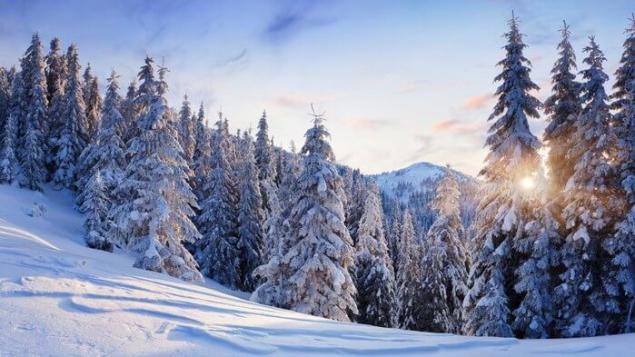
1. Squirrel trap.
Such a trap can be made from a one and a half liter plastic bottle. Cut the neck off. Make longitudinal incisions on the throat and sharpen them to get small sharp peaks. Now cut off the resulting “funnel” from the bottle, flip and insert into the bottle. You make holes around the cut. Sewing a line or wire. At the bottom of the bottle, put what proteins eat: nuts from cones, mushrooms, etc. Now look for where the snow is littered with husks. So there's a squirrel hollow somewhere. The trap must be securely fixed on the trunk of the tree so that it looks into the sky. Put a trap in the evening, check the next day. The squirrel crawls behind the nuts inside the trap, and it is prevented from getting out by pointed peaks along the edge of the entrance. You can catch a stick. Make a dozen and a half small snares of wire and fasten them along a stick, one and a half to two meters long. The stick should be leaned against the tree where the squirrel lives. At the same time, not just lean, but well fix it in the ground and on the bark of the tree. At the bottom of the stick, you can put the bait. The squirrel, descending on the stick, will become entangled in the snares, begin to rush and even tighten the snares.
2.A bird trap.
This trap is made on the same principle as the trap "on the stick". Only the snares are placed on the tree branch. On top, above the branch, a piece of hide, fat or just a bunch of rowan hangs on a fishing line. The bird sits on a branch with snares and gets entangled in them. As a result, you get a lump of feathers and some meat. But for a survival situation, this will do.
3. How to catch mice "on the pot."
Mice are edible animals. Moreover, in some countries, dried mice are a delicacy. The main question is how to catch this delicacy. If you have an army pot, there will be a trap. Install a pot near the habitat of mice, best of all - at the trunk of a fallen tree, slightly tilted. At the bottom, put the bait tied to a thin lace. The upper end of the lace is tied to a thin stick, which will play the role of a stopper. And the role of the lid at the trap will be performed by the lid of the pot. The cover by the handle should be tied to the peg. Set the stopper stick on the edge of the pot so that the lid rests on it. The mouse, climbing into the pot, will break the stopper, the lid will fall, and the rodent will be inside the trap.

4. Shire on the hare.
The silk should be made of wire up to 1 mm thick and about 70 cm long. Wire can be extracted from a burnt tire, from an electric wire, or from a steel cable, if you carefully splash it. A roll of steel wire should go into your “forest” survival kit, along with a chain saw and fire. At the end of the wire you need to make a small loop. Then put the free end of the wire into it. It'll be a noose. The loop should be the size of your open five. This trap should be set on a hare trail in a narrow passage behind a fallen tree, and the free end should be fixed as best as possible. Such snares to make and place in different places will have at least 20 – 30.
Caught animals should be killed as quickly and painlessly as possible. Like wringing his neck. Or by cutting a jugular vein with a knife. Not humane? The choice is yours: either the animal or you. Yes, by the way, try to do such things not with your bare hands, but with thick mittens so as not to get a bite.
Yeah, and more. If you think you will have a lot of free time, you are wrong. From the very early morning and almost until dark (and in winter it gets dark early) you will have to go around your hunting grounds. Traps will need to be checked at least three times a day! Otherwise, the beast will be picked up by someone else. And do not expect that 20-30 silks will get 20-30 rabbits. It won't be. At first, even one bunny in three days will be a holiday for you. It's the harsh truth of life.
A word about snow water.
In winter, there is a lot of snow in the forest. And, it would seem, there should be no problems with water: drown water from the snow, filter from garbage and order. But there is one BUT. The fact is that snow is a distillate. That is, it does not contain salts and trace elements, which contain both river and spring water. Therefore, if you drink melt water, after a while the body will begin to desalinate. This is deadly. Some salt can be obtained from animal blood. Another part is by using fire ash. But it won't be enough anyway. Therefore, it is better to take water from rivers and springs, and melt snow only as a last resort and for "technical" needs (washing, cooking meat and mushrooms, etc.).
P.S. And remember, just changing our consumption – together we change the world!
Join us on Facebook, VKontakte, Odnoklassniki
Source: vk.com/gnezdo_paranoika?w=wall-38598449_115815
We will not dig anything under a half-meter layer of snow! It's not energy efficient! We're going to spend more calories looking and digging up than we get with the food we find.
Food is also a kind of business: investing, we must make a profit or at least go to zero. Otherwise, the business is unprofitable. The exception is mushrooms growing on trees (see photo).
1. Winter care. In mild winter, it grows until March.

2.Ovens. They grow on trees all winter. If they are frozen to a hard stone state, they can be sawed off with a hacksaw or cut with a knife.

3. Orange Tremella (Scientifically Tremella Mesenterica). It can be found on rotted hazel and other dry hardwood trees. It is quite edible and sufficiently nutritious product. In the heat, the mushroom is practically not stored, we use quickly. Fry, boil, add to the soup or roast.

But a full diet can only create hunting and fishing. Fishing is less costly in effort than hunting, although it will require no less ingenuity. Therefore, if you find yourself in the woods in winter without a firearm, it is best to immediately head towards a lake or river.
Fishing.
Fishing is preferable if you have something to do with ice. For this purpose, an axe and an infantry spatula are suitable. As a last resort, a knife will do. Only hollowing out the hole with a knife will take much longer. And another advice: tie a noose on the knife so that it does not slip out of your hand. Needless to say, the ice must be strong enough to support your weight, otherwise swimming in sub-zero temperatures is guaranteed.
First, decide how you will fish. I would recommend ice fishing for the cross. This method of fishing is described in detail in special literature. The change is made as follows. The cargo clings to a fishing line or a sufficiently long rope. If there is no suitable loader, fill the can with sand. No can - wrap a stone in a piece of fabric. Well, that's not the hard part. It's much harder with fishing hooks.
Hooks can be made from pieces of wire, pins, sharp bones or even sharpened knots. The hooks are tied tightly along the line. Now it's the bait. Suit dry berries collected along the river bank, or scraps, and even feathers of birds. The line is dropped into the hole so that the load falls to the bottom. The upper end is tied to the middle of a small stick. The stick should be such that it cannot slip into the hole. Across this stick, in the center, at 90 degrees, the second is tied, on the upper end of which you can attach a piece of red cloth or just a lump. The stick to which the fishing line is tied lies slightly away from the hole. The fish pulls the line and drags the stick to the wormwood. But, since its length is greater than the size of the hole, it does not fall into the water, but stands across. In this case, the flag stick will stand upright and indicate to you that it is time to pull out the catch.

The switch is most effective in the “poacher” version, with the number of hooks more than 10. When it comes to survival, there is no need to comply with fishing laws. Twelve people would rather judge you than six. Before you break the ice and start fishing, store firewood and arrange a campfire somewhere on the shore, near the place where you are going to fish. Ideally, if there is a tent, you need to put it up or make at least a heat shield. All this is necessary so that in case of your unforeseen bathing in the water, you can quickly make a fire and dry your clothes. Think about how and in what order you will remove and dry your clothes, if necessary.
But back to the hunt.
Hunting with snares is prohibited by law! Why? The answer to this question lies not in the realm of law, but in the realm of human psychology. Silks are easy to manufacture, cheap, they can be put a lot and on a large area. And many hunters simply forget or frankly lazy to remove them. In such traps, animals die pointlessly and uselessly. That's what poaching is. But when it comes to your survival, poaching methods are the most effective. That is why they are considered poachers.
Just don’t act like a fuck, take as much from the world as you need. And then the world will find a way to make your life more comfortable and fun. Sinks and traps. Silks are best made of thin wire, and put in gloves so that the beast does not smell your smell.
Only catch animals that you can physically handle. As long as you are not a super-duper hunter who sleeps in skis, do not even dream of catching a boar: it can end very badly. Your prey up to this point are bunnies, birds, squirrels and mice. Here we go. But even if you know the habits of animals and you have a thin wire or fishing line for traps, in winter it is very difficult to make such a trap that it is guaranteed to work. Frost, snow, temperature changes - all this does not contribute to the operation of complex traps. Your footprints in the snow also reveal the installation site. In winter, only snares and primitive fishing devices work.

1. Squirrel trap.
Such a trap can be made from a one and a half liter plastic bottle. Cut the neck off. Make longitudinal incisions on the throat and sharpen them to get small sharp peaks. Now cut off the resulting “funnel” from the bottle, flip and insert into the bottle. You make holes around the cut. Sewing a line or wire. At the bottom of the bottle, put what proteins eat: nuts from cones, mushrooms, etc. Now look for where the snow is littered with husks. So there's a squirrel hollow somewhere. The trap must be securely fixed on the trunk of the tree so that it looks into the sky. Put a trap in the evening, check the next day. The squirrel crawls behind the nuts inside the trap, and it is prevented from getting out by pointed peaks along the edge of the entrance. You can catch a stick. Make a dozen and a half small snares of wire and fasten them along a stick, one and a half to two meters long. The stick should be leaned against the tree where the squirrel lives. At the same time, not just lean, but well fix it in the ground and on the bark of the tree. At the bottom of the stick, you can put the bait. The squirrel, descending on the stick, will become entangled in the snares, begin to rush and even tighten the snares.
2.A bird trap.
This trap is made on the same principle as the trap "on the stick". Only the snares are placed on the tree branch. On top, above the branch, a piece of hide, fat or just a bunch of rowan hangs on a fishing line. The bird sits on a branch with snares and gets entangled in them. As a result, you get a lump of feathers and some meat. But for a survival situation, this will do.
3. How to catch mice "on the pot."
Mice are edible animals. Moreover, in some countries, dried mice are a delicacy. The main question is how to catch this delicacy. If you have an army pot, there will be a trap. Install a pot near the habitat of mice, best of all - at the trunk of a fallen tree, slightly tilted. At the bottom, put the bait tied to a thin lace. The upper end of the lace is tied to a thin stick, which will play the role of a stopper. And the role of the lid at the trap will be performed by the lid of the pot. The cover by the handle should be tied to the peg. Set the stopper stick on the edge of the pot so that the lid rests on it. The mouse, climbing into the pot, will break the stopper, the lid will fall, and the rodent will be inside the trap.

4. Shire on the hare.
The silk should be made of wire up to 1 mm thick and about 70 cm long. Wire can be extracted from a burnt tire, from an electric wire, or from a steel cable, if you carefully splash it. A roll of steel wire should go into your “forest” survival kit, along with a chain saw and fire. At the end of the wire you need to make a small loop. Then put the free end of the wire into it. It'll be a noose. The loop should be the size of your open five. This trap should be set on a hare trail in a narrow passage behind a fallen tree, and the free end should be fixed as best as possible. Such snares to make and place in different places will have at least 20 – 30.
Caught animals should be killed as quickly and painlessly as possible. Like wringing his neck. Or by cutting a jugular vein with a knife. Not humane? The choice is yours: either the animal or you. Yes, by the way, try to do such things not with your bare hands, but with thick mittens so as not to get a bite.
Yeah, and more. If you think you will have a lot of free time, you are wrong. From the very early morning and almost until dark (and in winter it gets dark early) you will have to go around your hunting grounds. Traps will need to be checked at least three times a day! Otherwise, the beast will be picked up by someone else. And do not expect that 20-30 silks will get 20-30 rabbits. It won't be. At first, even one bunny in three days will be a holiday for you. It's the harsh truth of life.
A word about snow water.
In winter, there is a lot of snow in the forest. And, it would seem, there should be no problems with water: drown water from the snow, filter from garbage and order. But there is one BUT. The fact is that snow is a distillate. That is, it does not contain salts and trace elements, which contain both river and spring water. Therefore, if you drink melt water, after a while the body will begin to desalinate. This is deadly. Some salt can be obtained from animal blood. Another part is by using fire ash. But it won't be enough anyway. Therefore, it is better to take water from rivers and springs, and melt snow only as a last resort and for "technical" needs (washing, cooking meat and mushrooms, etc.).
P.S. And remember, just changing our consumption – together we change the world!
Join us on Facebook, VKontakte, Odnoklassniki
Source: vk.com/gnezdo_paranoika?w=wall-38598449_115815
Non-trivial stew of cabbage with cream and eggs
Drink this beverage every day and You will improve your metabolism!


